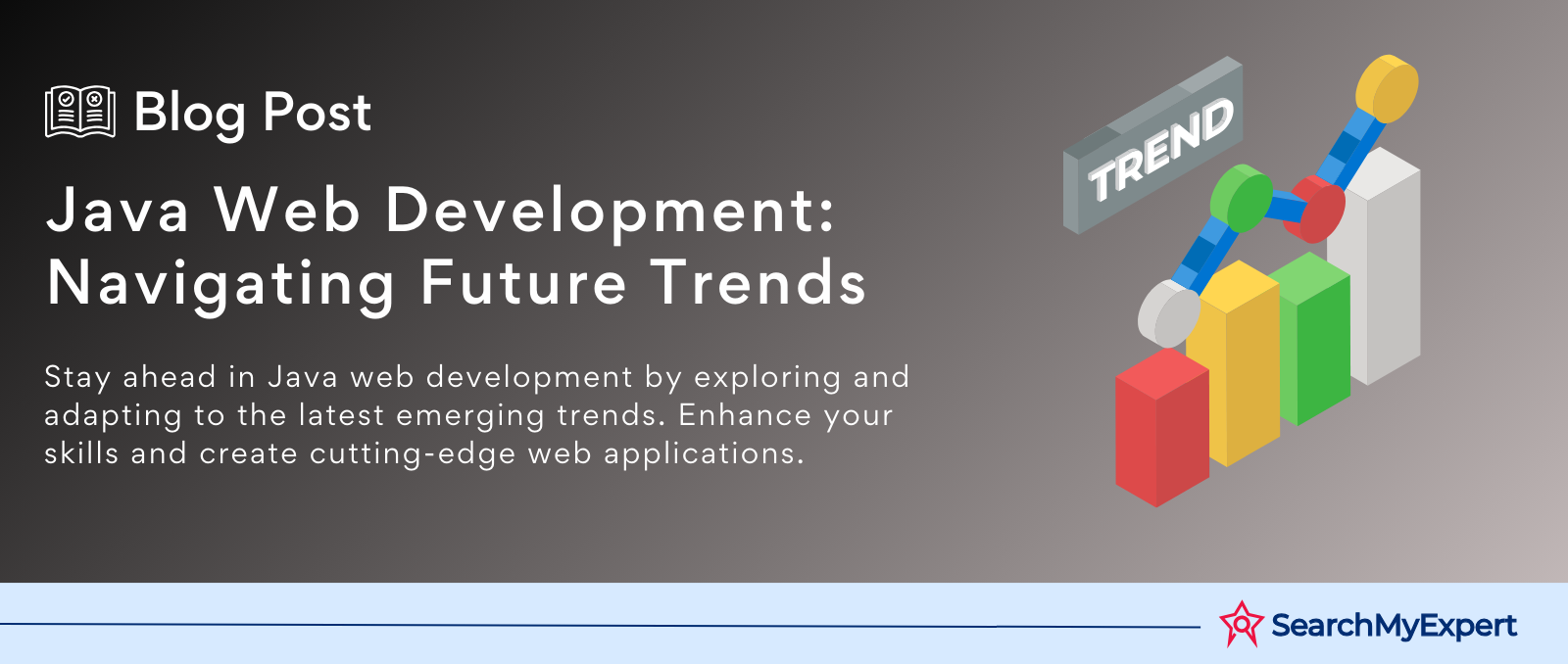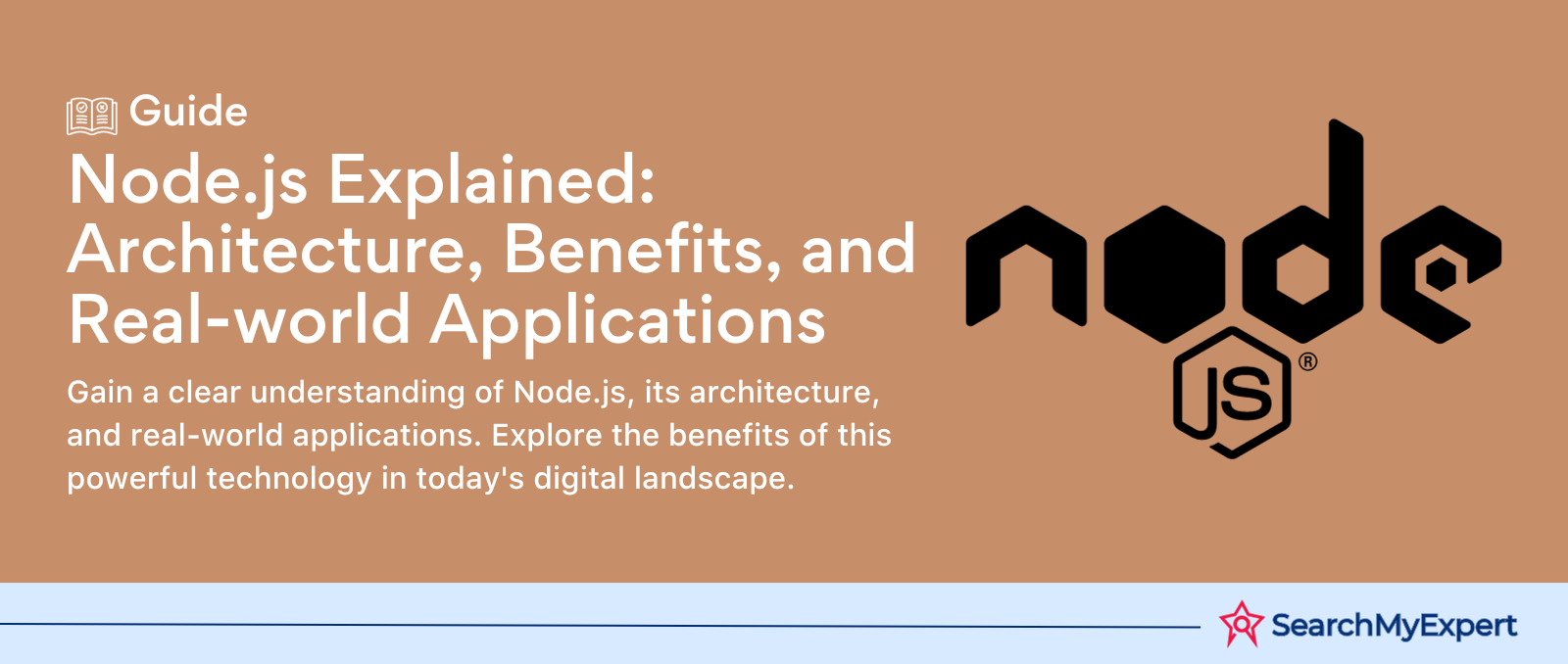Java Web Development: Keeping Up with Emerging Trends

Java Web Development: Navigating the Future
Java's Role in the Evolving Web Development Landscape
Java, an enduring powerhouse in the world of programming, continues to reign as a cornerstone of web development. Its versatility, robust performance, and widespread adoption have established Java as a go-to language for countless developers and enterprises.
The Tech Landscape: A Constant State of Flux
The realm of technology is dynamic and ever-changing. This fluidity demands adaptability and foresight, especially in web development. Java's history is one of evolution, adapting to new trends while maintaining its core principles of efficiency and reliability.
Objective: Exploring Java's Path Forward
This journey delves into the currents shaping Java's role in web development. By examining the latest trends and pondering future directions, we aim to provide insights into how Java will continue to shape the digital landscape.
Microservices and Serverless Architecture: Java's New Frontier
The Rise of Microservices and Serverless Computing
In the cloud-centric world of modern web development, microservices and serverless computing have emerged as transformative forces. These paradigms shift the focus from monolithic applications to more granular, distributed architectures.
Microservices: Small, but Mighty
Microservices break down complex applications into smaller, independent units. This approach promotes better scalability, easier maintenance, and quicker deployment. In the cloud, these characteristics become even more pronounced, offering unparalleled agility.
Serverless Computing: Freedom from Infrastructure
Serverless computing takes this a step further, abstracting server management completely. Developers can focus solely on code, while the cloud provider handles the infrastructure. This results in significant cost savings and operational efficiencies.
Java Frameworks: Enablers of Modern Architectures
Java, with its rich ecosystem of frameworks, is perfectly positioned to leverage these trends. Spring Boot, for instance, is a game-changer.
Spring Boot: Simplifying Microservices Development
Spring Boot offers a streamlined approach to building microservices. Its convention-over-configuration philosophy reduces boilerplate code, speeding up development. By handling the intricacies of microservices, Spring Boot allows developers to focus on creating business value.
The Benefits: Flexibility, Scalability, and Agility
The transition to microservices and serverless architectures brings tangible benefits:
- Flexibility: Easier to update and maintain separate components.
- Scalability: Independent scaling of different services as needed.
- Agility: Faster deployment cycles and quicker response to market changes.
Java's compatibility with these approaches ensures its continued relevance in the evolving web development landscape. By embracing microservices and serverless computing, Java developers can build more resilient, scalable, and efficient applications.
Embracing Cloud-Native Technologies: Java's Leap into the Cloud
Cloud Adoption: A Necessity for Web Development
The cloud is no longer a luxury; it's a necessity. For modern web development, the cloud offers unparalleled efficiency, scalability, and flexibility. Java's journey into this realm reflects a commitment to staying at the forefront of technology trends.
The Cloud: A Game Changer
The shift to cloud-native technologies represents a paradigm shift in how applications are developed, deployed, and managed. It's about harnessing the full potential of the cloud to build more robust, scalable, and efficient web applications.
Java and Cloud Platforms: A Seamless Integration
Java's robustness and flexibility make it a natural fit for cloud platforms like AWS and Azure.
AWS and Azure: Expanding Java's Horizons
AWS and Azure offer a plethora of services that complement Java's capabilities. From scalable computing resources to advanced AI and data analytics, these platforms enable Java developers to build sophisticated, cloud-native applications.
Cloud-Optimized Frameworks: Quarkus and Micronaut
Emerging Java frameworks are pivotal in this transition.
Quarkus: Supersonic, Subatomic Java
Quarkus is designed specifically for the cloud. It reimagines the Java stack for a new era, optimizing runtime and memory usage for containerized environments. This makes Java applications incredibly efficient in cloud deployments.
Micronaut: Lightweight, Ahead-of-Time Compilation
Micronaut takes a different approach, focusing on minimal memory footprint and fast startup times. It's perfect for microservices, where resources are at a premium, and efficiency is key.
The Outcome: Enhanced Efficiency and Modernization
Adopting cloud-native technologies means:
- Enhanced Efficiency: Optimal resource utilization and cost savings.
- Agility: Faster, more responsive development cycles.
- Scalability: Easy scaling of applications to meet demand.
Java's embrace of cloud-native technologies is not just about keeping up; it's about leading the way in modern web development.
The Evolving Face of User Interfaces in Java Web Development
The Shift to Reactive and Single-Page Applications (SPAs)
User experience is king in modern web development. The shift towards reactive and single-page applications (SPAs) underscores this reality. These applications offer rich, dynamic user experiences, resembling desktop applications in their responsiveness and interactivity.
Reactive Applications: Instant Feedback, Enhanced User Engagement
Reactive applications respond to user interactions in real time, making the web experience more dynamic and engaging. This approach is crucial in a digital era where user attention is at a premium.
SPAs: A Seamless Web Journey
Single-page applications load once, with dynamic content updates occurring on the client side. This results in a smoother, faster user experience, free from the traditional page reload of multi-page web applications.
Java Frameworks: Powering Dynamic UIs
Java is not left behind in this UI revolution. Frameworks like Vaadin and Play are at the forefront of this transformation.
Vaadin: Rich UI Components for Java
Vaadin leverages Java's server-side capabilities to create rich web UIs. Its extensive library of UI components enables developers to build complex, interactive web applications efficiently.
Play Framework: Java's Gateway to Modern Web Apps
The Play Framework brings a lightweight, stateless architecture to Java web applications. It's ideal for building highly scalable SPAs, offering a reactive platform that aligns with modern web standards.
Progressive Web Apps (PWAs): The Best of Both Worlds
Java's role extends to the realm of Progressive Web Apps (PWAs), which offer a mobile-like experience in a web application.
PWAs: Bridging the Gap Between Web and Mobile
PWAs leverage the latest web technologies to deliver an app-like experience. With Java, developers can create PWAs that are fast, reliable, and engaging, blurring the lines between web and mobile applications.
A User-Centric Future
Java's evolution in UI development is all about enhancing the user experience. By embracing reactive SPAs and PWAs, Java continues to be a pivotal player in delivering modern, user-centric web applications.
AI and Machine Learning Integration in Java Web Development
The Rising Role of AI and ML in Web Applications
Artificial Intelligence (AI) and Machine Learning (ML) are not just buzzwords; they're revolutionizing web development. Their integration into Java web applications is changing the game, making apps smarter, more intuitive, and incredibly efficient.
AI/ML: The New Web Development Frontier
The incorporation of AI and ML in web applications represents a significant leap forward. These technologies enable applications to learn from data, predict user behavior, and make decisions in real time.
Java and AI/ML Frameworks: A Powerful Combination
Frameworks like H2O and Deeplearning4j have made it easier for Java developers to integrate sophisticated AI algorithms into their applications.
H2O: Democratizing AI in Java
H2O brings AI and ML to Java in an accessible way. It offers a range of algorithms and models that can be easily integrated into web applications, enhancing their capabilities and intelligence.
Deeplearning4j: Deep Learning for Java
Deeplearning4j is a deep-learning framework tailored for Java. It allows developers to construct and deploy complex neural networks, bringing advanced AI capabilities to Java web applications.
Potential Applications: Personalization, Enhanced Search, Automation
The possibilities opened up by AI and ML integration are vast:
- Personalized User Experiences: AI algorithms can analyze user data to deliver highly personalized content and recommendations.
- Enhanced Search Functionality: ML enhances search algorithms, making them more accurate and efficient.
- Automated Tasks: AI can automate routine tasks, improving efficiency and reducing the scope for human error.
A Smarter Web with Java
The integration of AI and ML into Java web development signifies a shift towards smarter, more responsive, and user-centric applications. This convergence of technologies is setting the stage for a new era of web applications that are not only functional but also intelligent.
Security and Performance: Pillars of Java Web Development
The Imperative of Robust Security
In the digital age, security is paramount. For Java web development, implementing robust security measures is not just a best practice; it's a necessity.
Security: A Non-Negotiable Aspect
The rise in cyber threats and data breaches underscores the need for stringent security in web applications. Java's development ecosystem provides various tools and frameworks to safeguard applications against these threats.
Tools and Frameworks for Enhanced Security
Java offers a plethora of security tools and frameworks, enabling developers to build secure web applications.
Vulnerability Scanning: Proactive Defense
Tools like OWASP Dependency-Check help identify and mitigate security vulnerabilities in Java applications. Regular scanning ensures early detection of potential threats.
Access Control and Data Encryption: Safeguarding Information
Frameworks like Spring Security offer comprehensive access control mechanisms and data encryption capabilities. These ensure that sensitive information remains protected from unauthorized access.
Performance Optimization: Delivering Speed and Responsiveness
Performance is as crucial as security. Users expect fast and responsive web experiences, and Java developers have a variety of optimization techniques at their disposal.
Efficient Code Practices: The Foundation of Performance
Writing efficient, well-optimized code is the first step in ensuring performance. Techniques like proper memory management and optimized algorithms play a critical role.
Profiling and Optimization Tools: Fine-Tuning Performance
Tools like JProfiler and VisualVM help in identifying performance bottlenecks. By analyzing application behavior, developers can make informed decisions to optimize performance.
The Balance: Secure and Performant Applications
The key lies in balancing security and performance. Java's robust ecosystem provides the tools and frameworks needed to achieve this balance, ensuring that web applications are not only secure but also fast and efficient.
Looking Ahead: The Future of Java Web Development
Embracing Cutting-Edge Trends
As we peer into the horizon of Java web development, emerging trends like WebAssembly and GraalVM promise to redefine performance and portability.
WebAssembly: Enhancing Performance and Portability
WebAssembly stands poised to revolutionize web application performance. With its ability to run code at near-native speed, it offers a new level of efficiency. Java's compatibility with WebAssembly means Java applications can now reach new heights in performance and cross-platform compatibility.
GraalVM: A New Era of Efficiency
GraalVM, a universal virtual machine, is making waves with its ability to run multiple languages efficiently. Its impact on Java is profound, enhancing Java's performance and allowing seamless integration with other programming languages.
Java in Emerging Technologies: IoT and Blockchain
Java's journey extends beyond traditional web applications, venturing into the realms of the Internet of Things (IoT) and blockchain.
IoT: Java's Expanding Territory
In the IoT space, Java's robustness and platform independence make it an ideal choice. Java can power everything from small sensors to complex IoT ecosystems, demonstrating its versatility and reliability.
Blockchain: Java's New Frontier
The blockchain technology, known for its security and transparency, is another area where Java is making its mark. Java's secure environment and widespread usage make it a strong candidate for developing blockchain applications.
Conclusion
Java's adaptability has been its greatest strength. As the web development landscape evolves, Java continues to evolve with it. Its ability to embrace new technologies, adapt to changing trends, and maintain its core strengths ensures its continued relevance and dominance in the future of web development.
Experience cutting-edge Java solutions with our
Java Development Service Company.
share this page if you liked it 😊
Other Related Blogs

Mastering Docker for App Development: A Comprehensive Guide to Benefits, Use-Cases, and Alternatives
STAY UP TO DATE
GET PATH'S LATEST
Receive bi-weekly updates from the SME, and get a heads up on upcoming events.
Contact Us











